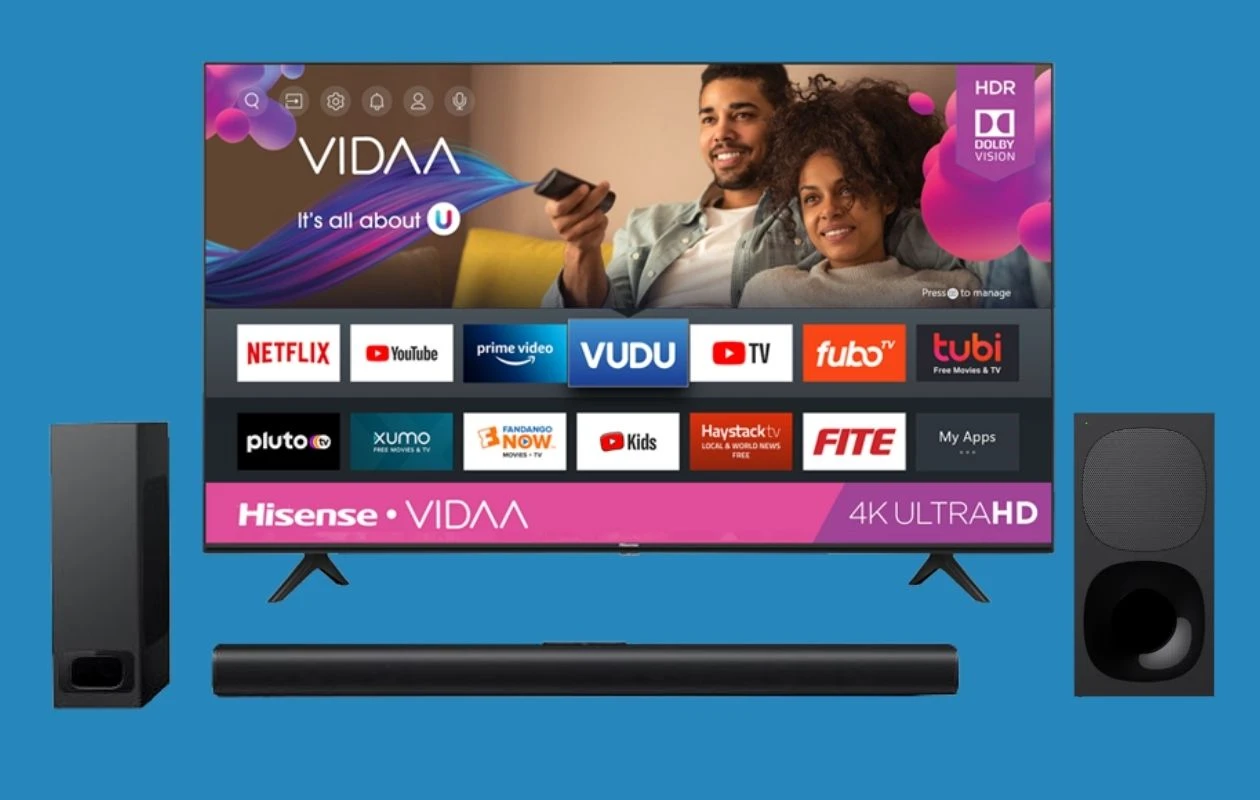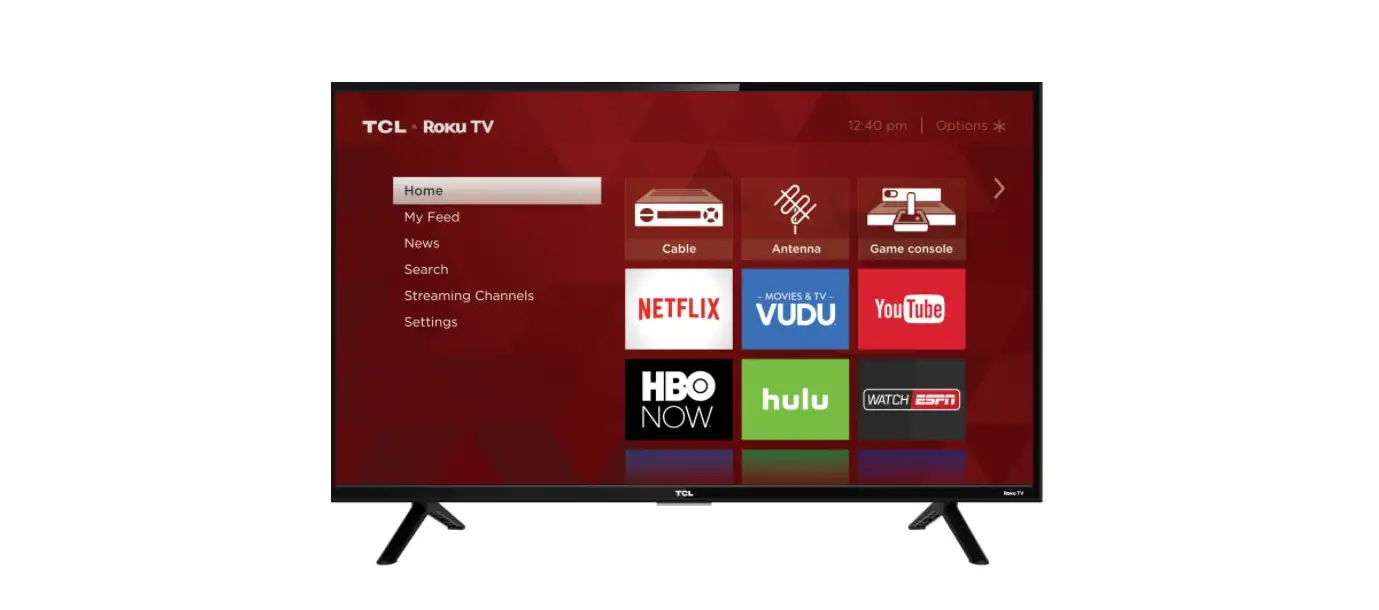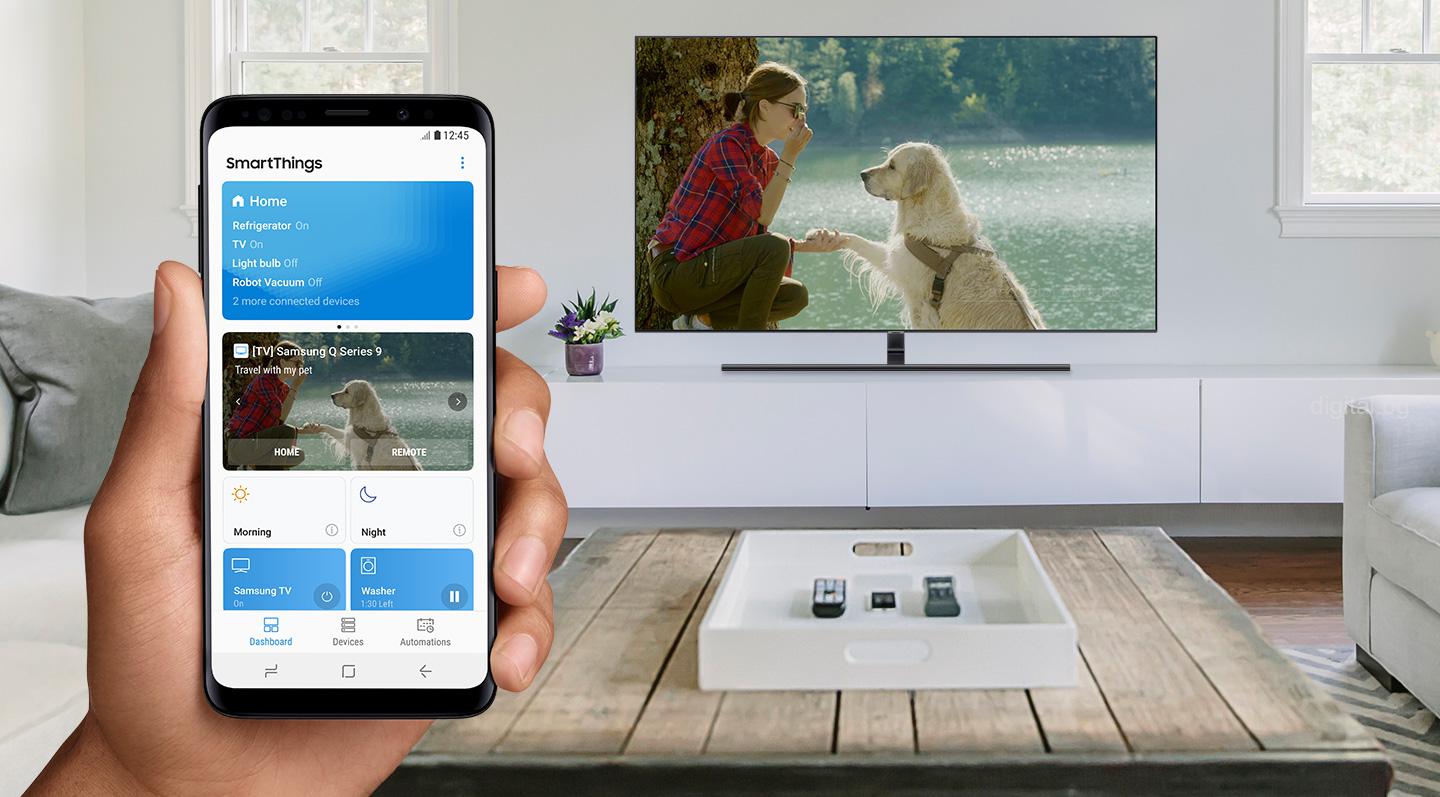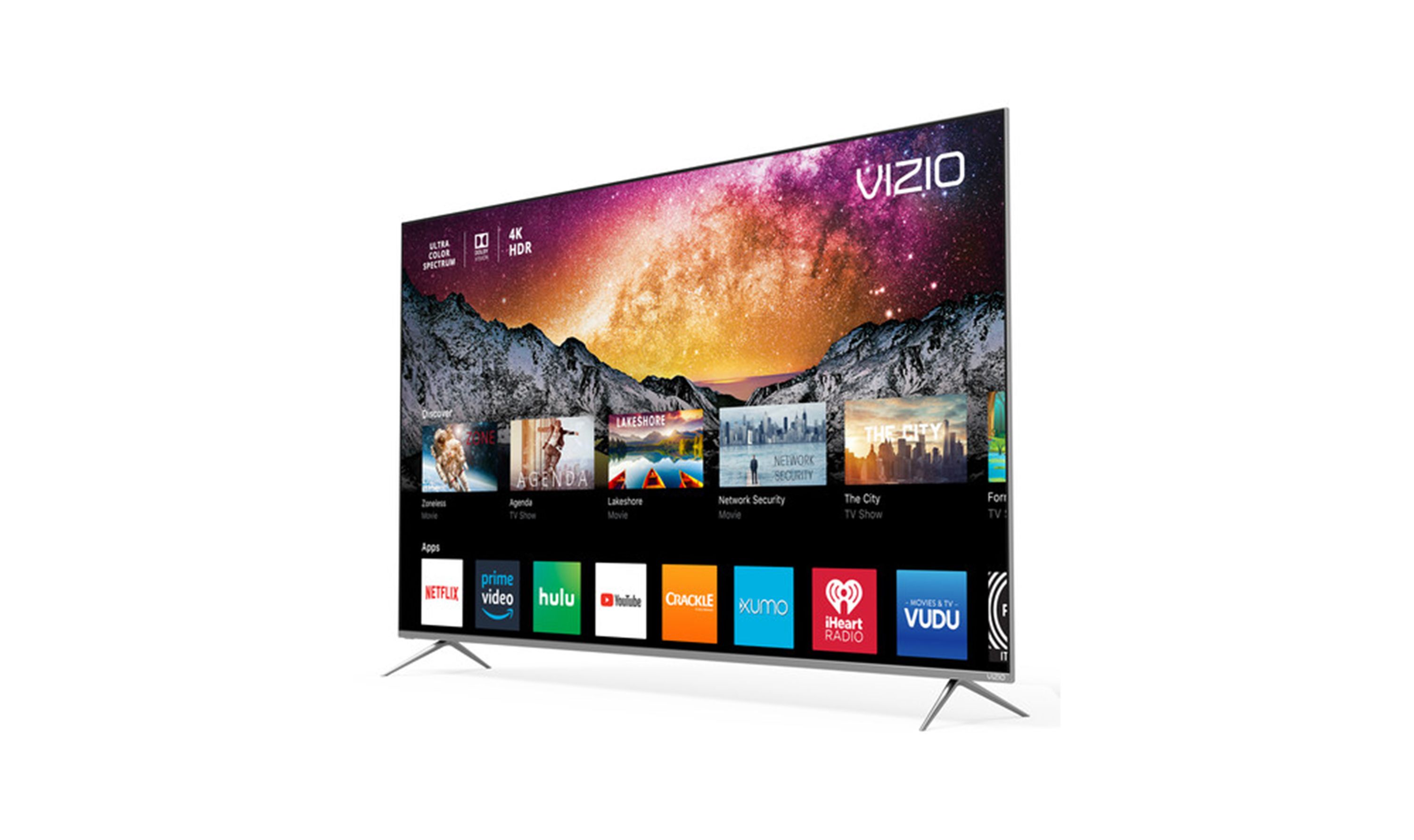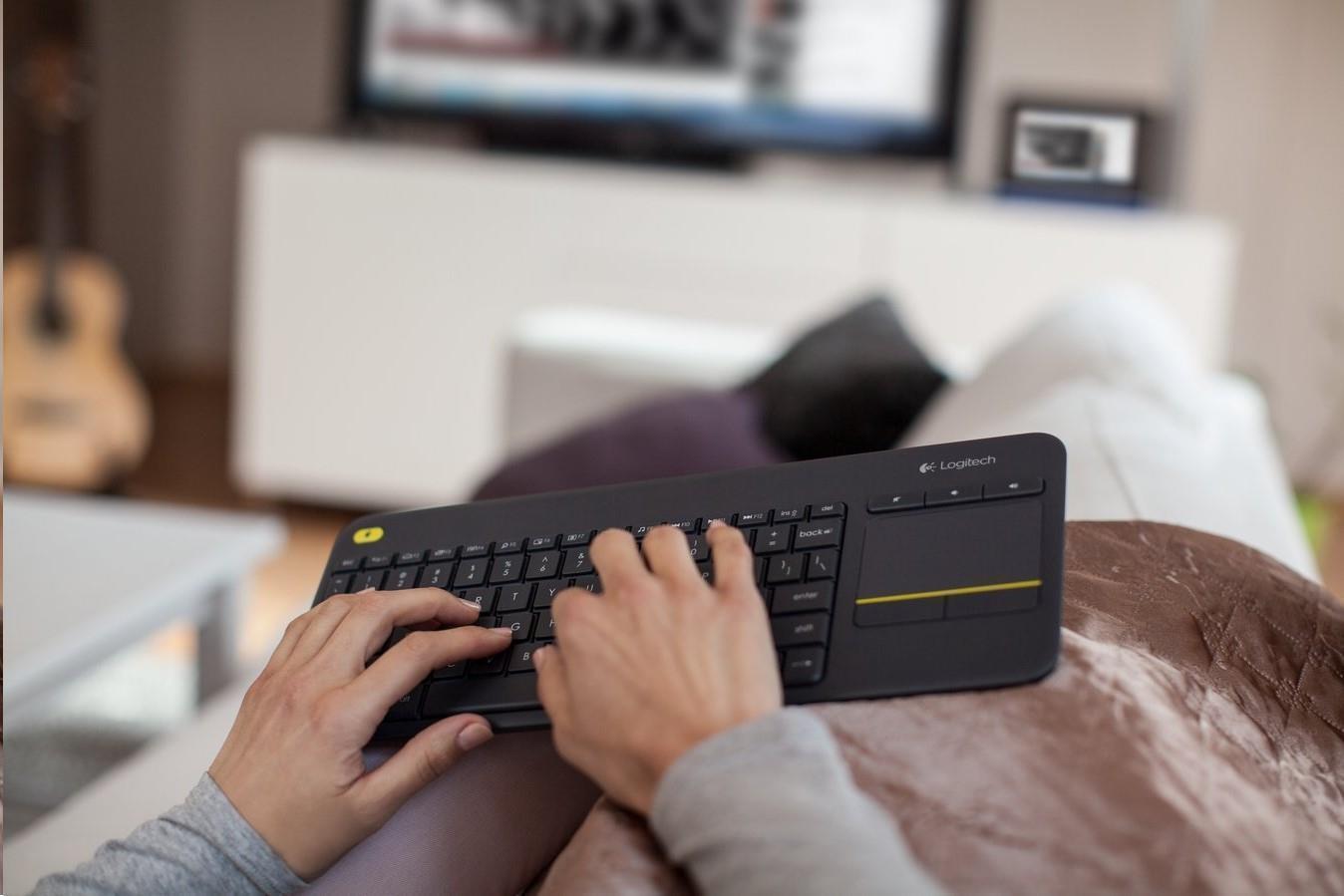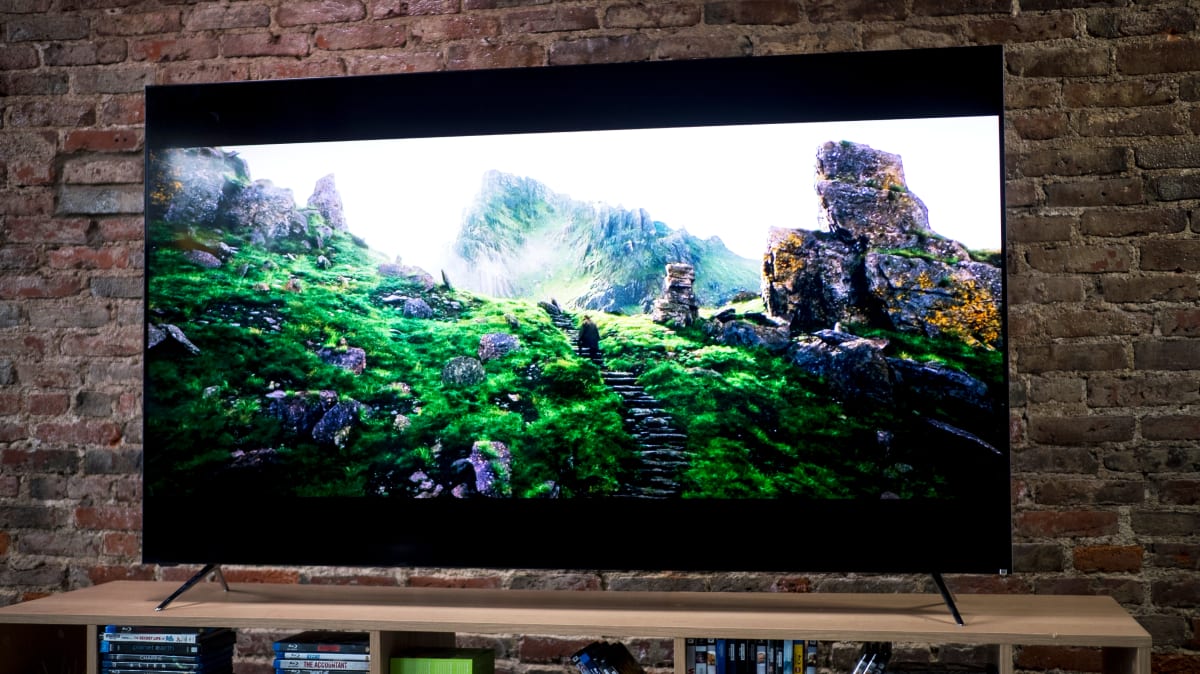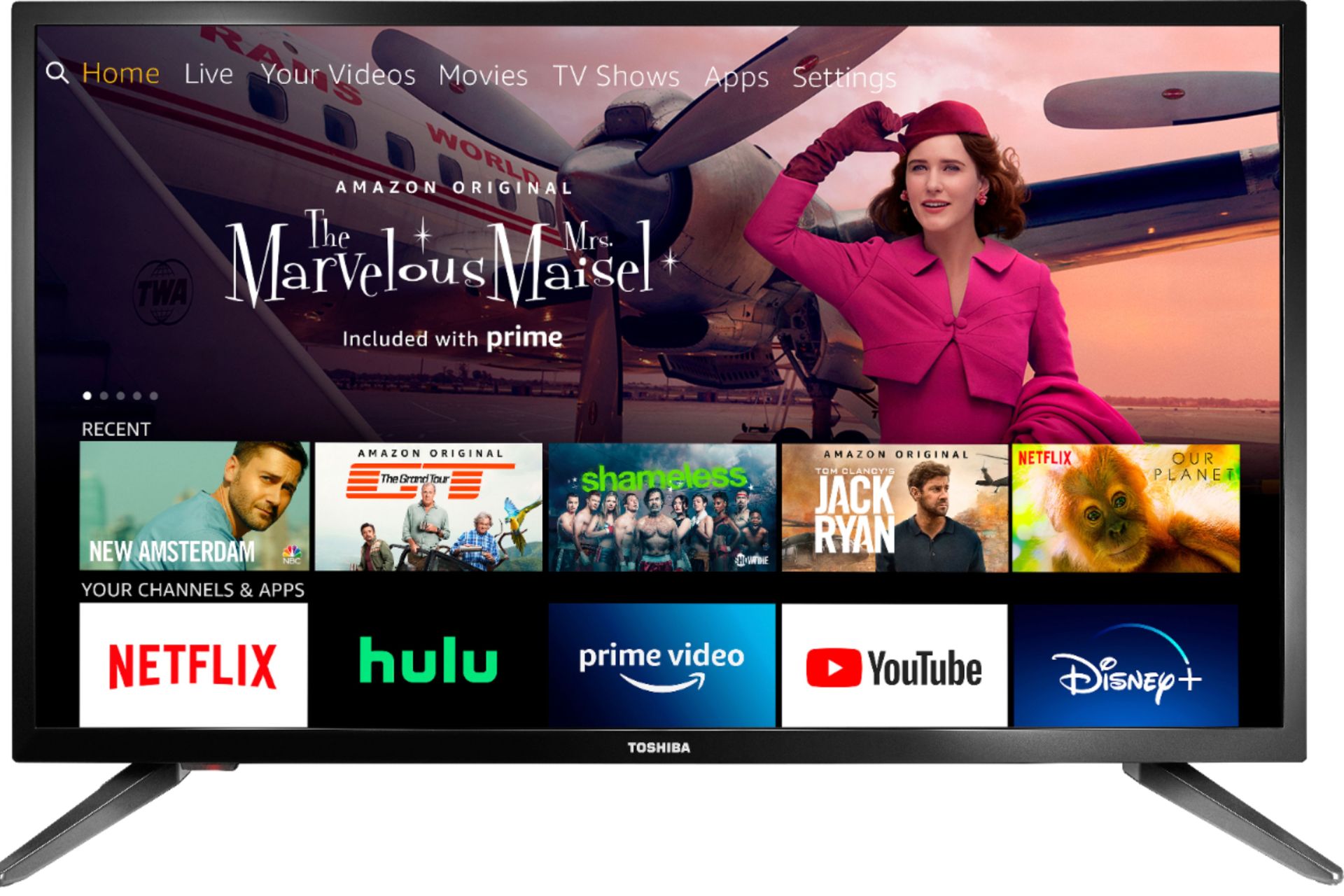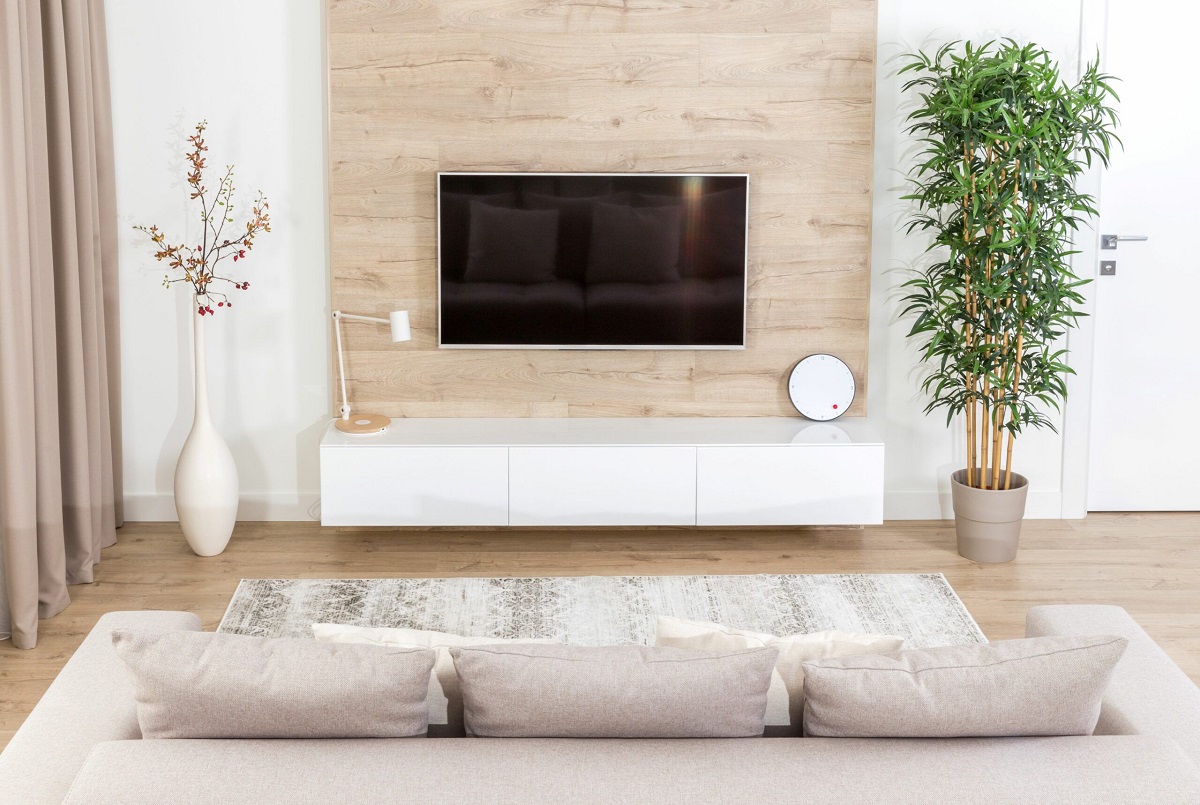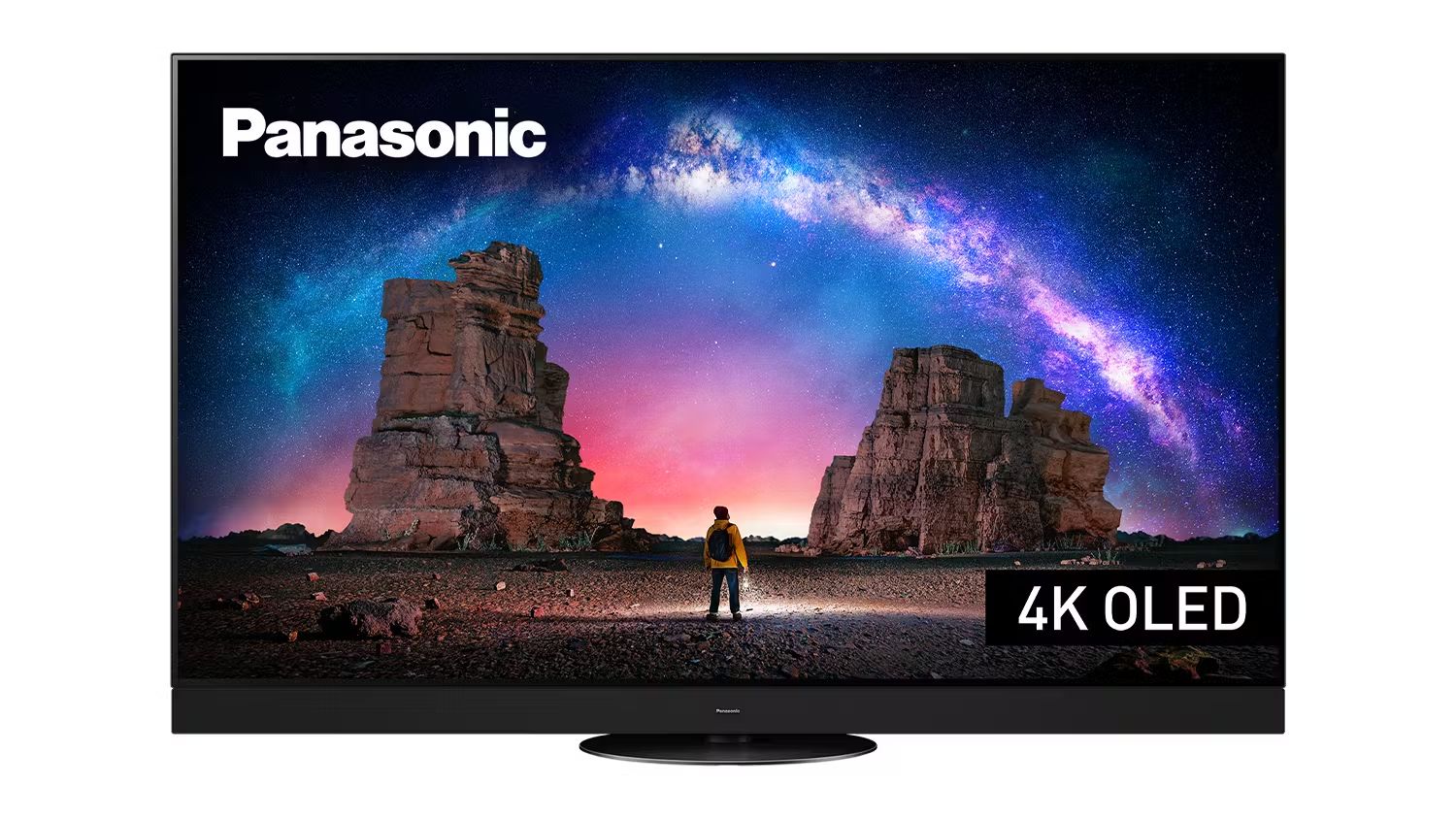Introduction
Bluetooth technology has become an essential feature in the world of entertainment, allowing wireless connectivity and easy access to various devices. While many modern smart TVs come equipped with built-in Bluetooth functionality, there are still some older models that lack this capability. However, the good news is that you can easily install Bluetooth in your smart TV by following a few simple steps.
In this guide, we will walk you through the process of installing Bluetooth in your smart TV. Whether you want to connect your TV to wireless headphones, speakers, or other compatible devices, adding Bluetooth connectivity will open up a world of possibilities and enhance your entertainment experience.
Before we delve into the installation process, it’s important to note that not all smart TVs can have Bluetooth added externally. Some older models may not have the necessary hardware for Bluetooth compatibility. However, for those TVs that do have the capability, adding Bluetooth is a straightforward process that can be completed in a matter of minutes.
So, let’s get started and turn your TV into a wireless entertainment hub!
Step 1: Check if your TV has built-in Bluetooth functionality
Before proceeding with the installation process, it’s important to determine if your smart TV already has built-in Bluetooth functionality. Most newer models come equipped with Bluetooth, but it’s always a good idea to double-check.
To check if your TV has Bluetooth, you can start by referring to the TV’s user manual. Look for any mention of Bluetooth compatibility or wireless connectivity options. You can also check the TV’s settings menu for a Bluetooth option. Navigate through the settings and look for any Bluetooth-related settings or menus.
If you don’t have the manual or cannot find any Bluetooth settings in the TV’s menu, you can also try using a universal Bluetooth remote control. These remote controls are designed to work with Bluetooth-enabled devices, so if your TV responds to the universal remote, it is likely to have Bluetooth capability.
If you are still unsure whether your TV has Bluetooth functionality, you can also check the manufacturer’s website or contact their customer support for further assistance. They will be able to provide you with accurate information regarding your TV’s specifications.
It is important to note that even if your TV doesn’t have built-in Bluetooth, you can still install Bluetooth functionality using an external Bluetooth dongle. The dongle acts as an adapter and allows your TV to connect wirelessly to other Bluetooth devices.
Once you have confirmed that your TV either has built-in Bluetooth or can support an external Bluetooth dongle, you can proceed to the next step in the installation process.
Step 2: Purchase a Bluetooth dongle
If your smart TV doesn’t have built-in Bluetooth functionality, the next step is to purchase a Bluetooth dongle. A Bluetooth dongle is a small device that plugs into the USB port of your TV and adds Bluetooth capability to it.
When choosing a Bluetooth dongle, it is important to ensure compatibility with your TV. Look for a dongle that is specifically designed for TVs or that supports the same Bluetooth version as your TV. You can usually find this information in the product description or specifications of the dongle.
Consider the range of the Bluetooth dongle as well. If you plan to use Bluetooth devices that are located far from your TV, look for a dongle with an extended range. This will ensure a stable and reliable Bluetooth connection between your TV and the paired devices.
It’s worth mentioning that while there are many options available, it’s best to purchase a Bluetooth dongle from a reputable brand or manufacturer. This can help ensure compatibility and minimize any issues that may arise during the installation process.
Before making a purchase, you can also check online forums or customer reviews to see if other people have successfully used the same Bluetooth dongle with their smart TV model. This can provide valuable insights and help you make an informed decision.
Once you have purchased a compatible Bluetooth dongle, you are ready to move on to the next step and install it on your TV.
Step 3: Power off your TV and locate the USB port
Before proceeding with the installation of the Bluetooth dongle, it’s important to power off your TV completely. This ensures that you can safely connect the dongle without any risk of damaging your TV or the dongle itself.
Once your TV is powered off, you need to locate the USB port. Most smart TVs have one or more USB ports located on the side or back of the device. These ports are typically used for connecting external devices such as USB drives or external hard drives. The USB port is where you will insert the Bluetooth dongle.
If you’re not sure where the USB port is located on your TV, you can refer to the TV’s user manual or check the manufacturer’s website for specific instructions. Alternatively, you can visually inspect the TV and look for any labeled ports.
In case you are unable to find any USB ports on your TV, it’s possible that it doesn’t have one. In such cases, you may need to explore alternative options, such as using an HDMI adapter with a USB port or consulting the TV’s user manual to see if there are any specific instructions for adding external devices.
Once you have located the USB port, you can proceed to the next step and insert the Bluetooth dongle into the port.
Step 4: Insert the Bluetooth dongle into the USB port
Now that you have located the USB port on your smart TV, it’s time to insert the Bluetooth dongle. The dongle will add Bluetooth functionality to your TV, allowing you to connect wirelessly to other Bluetooth devices.
Take the Bluetooth dongle and gently insert it into the USB port of your TV. Make sure to align the dongle with the port correctly, ensuring a secure and snug fit. Avoid applying excessive force or pushing the dongle at an angle, as this can damage both the dongle and the USB port.
If the Bluetooth dongle has an LED indicator, you may notice it light up once it is properly inserted into the USB port. This indicates that the dongle is receiving power from the TV.
It’s important to note that some Bluetooth dongles may require additional setup or installation steps, depending on the specific model. In such cases, it is recommended to refer to the instruction manual or any included documentation that came with the dongle. This will provide you with specific instructions on how to set up the dongle for your TV.
Once the Bluetooth dongle is securely inserted into the USB port, you can proceed to the next step and turn on your TV to begin the setup process.
Step 5: Turn on your TV and access the settings menu
With the Bluetooth dongle securely inserted into the USB port of your smart TV, it’s time to turn on your TV and access the settings menu. The settings menu is where you will configure and enable Bluetooth functionality on your TV.
Using your TV’s remote control, press the power button to turn on your TV. Give it a few moments to boot up and initialize all the necessary components.
Once your TV is powered on, use the remote control to navigate to the settings menu. The location of the settings menu may vary depending on your TV’s brand and model. Look for a button on your remote control that is labeled “Menu,” “Settings,” or a similar term. Press this button to open the settings menu on your TV.
If you’re having trouble finding the settings menu, you can refer to your TV’s user manual or visit the manufacturer’s website for assistance. They often provide detailed guides and instructions on how to navigate through the settings menu of different TV models.
Once you have accessed the settings menu, you are ready to proceed to the next step and navigate to the Bluetooth settings.
It’s important to note that the interface and arrangement of the settings menu may differ between TV models. In some cases, you may need to navigate through different submenus or tabs to find the Bluetooth settings. Take your time to explore the menu options and look for any reference to Bluetooth or wireless connectivity.
Once you have successfully accessed the settings menu and located the Bluetooth settings, you can proceed to the next step and enable Bluetooth pairing mode on your TV.
Step 6: Navigate to the Bluetooth settings
Now that you have accessed the settings menu on your smart TV, the next step is to navigate to the Bluetooth settings. This is where you will find options related to Bluetooth connectivity and pairing on your TV.
Using the navigation buttons on your remote control, scroll through the settings menu to locate the Bluetooth settings. Look for a section or tab labeled “Bluetooth,” “Wireless & Networks,” or a similar term.
Depending on your TV model and its user interface, the Bluetooth settings may be found under a “Connections” or “Network” category. If you’re having trouble finding the Bluetooth settings, refer to the TV’s user manual or visit the manufacturer’s website for specific instructions or a guide on navigating the settings menu.
It’s important to note that not all TVs have the same settings menu structure or terminology. Manufacturers design their user interfaces differently, so it’s normal to find some variation in the names and locations of the Bluetooth settings.
Once you have located the Bluetooth settings, you are ready to proceed to the next step and enable Bluetooth pairing mode on your TV. This will allow your TV to discover and connect with Bluetooth devices.
Keep in mind that some TVs may require you to enable general wireless connectivity before accessing the Bluetooth settings. If this is the case, look for a “Wireless” or “Network” option in the settings menu and ensure it is turned on.
With the Bluetooth settings menu now located, you are one step closer to enjoying wireless connectivity on your smart TV. Let’s proceed to the next step and enable Bluetooth pairing mode on your TV.
Step 7: Enable Bluetooth pairing mode
In order to connect your smart TV to Bluetooth devices, you need to enable Bluetooth pairing mode. This allows your TV to search for and connect with nearby Bluetooth devices.
Once you have navigated to the Bluetooth settings menu on your TV, look for an option to enable Bluetooth pairing mode. It may be labeled as “Pairing,” “Discoverable,” or “Add device,” depending on your TV’s brand and model.
Using your TV’s remote control, select the option to enable Bluetooth pairing mode. This will make your TV visible to other Bluetooth devices and ready to establish a connection.
It’s worth noting that some TVs may enter pairing mode automatically when you access the Bluetooth settings, while others may require you to manually enable it. If you’re unsure, refer to your TV’s user manual or online resources for information specific to your TV model.
Once you have successfully enabled Bluetooth pairing mode on your TV, a notification or indicator may appear on the screen, indicating that your TV is ready to pair with Bluetooth devices.
Remember to keep your TV within range of the Bluetooth devices you want to connect. Bluetooth has a limited range, typically up to 30 feet, so make sure the devices are in proximity to establish a stable connection.
With Bluetooth pairing mode now enabled on your TV, you can proceed to the next step and put your Bluetooth device into pairing mode to establish a connection.
Before moving on, note that some TVs may have a time limit for how long they remain in Bluetooth pairing mode. If you’re unable to connect your Bluetooth device, simply repeat the steps to re-enable Bluetooth pairing mode on your TV.
Step 8: Put your Bluetooth device into pairing mode
Now that you have enabled Bluetooth pairing mode on your smart TV, it’s time to put your Bluetooth device into pairing mode. This allows the device to be discovered and connected to your TV.
The process of putting a Bluetooth device into pairing mode may vary depending on the device. Typically, you can access the pairing mode by going into the device’s settings menu or by pressing a specific button or combination of buttons.
Refer to the user manual or online resources for your specific Bluetooth device to find instructions on how to activate pairing mode. This information is usually detailed in the “Bluetooth” or “Wireless” section of the device’s settings.
Once you have activated the pairing mode on your Bluetooth device, it will start searching for nearby devices, including your smart TV. Keep in mind that the process may take a few seconds or minutes, and the device’s screen or indicator may notify you when it finds your TV.
It’s important to note that some Bluetooth devices may require a PIN or passkey to establish a connection with your TV. If prompted, enter the PIN or follow any additional instructions provided by your device to complete the pairing process.
Ensure that your Bluetooth device is within range of your smart TV, typically within 30 feet, to establish a stable connection. Walls and obstacles can affect the Bluetooth signal, so minimizing obstructions between the devices can improve the connectivity.
Once your Bluetooth device has successfully paired with your TV, you are ready to move on to the next step and pair the devices together.
If you encounter any issues or difficulties with putting your Bluetooth device into pairing mode, consult the device’s user manual or contact the manufacturer’s support team for further assistance.
Step 9: Pair your TV with the Bluetooth device
Once your smart TV and Bluetooth device are both in pairing mode, it’s time to pair them together. This process allows the TV to establish a secure and stable connection with the Bluetooth device.
Using your TV’s remote control, navigate to the Bluetooth settings menu. Look for an option that allows you to search or scan for nearby Bluetooth devices. Select this option to initiate a search for available devices.
After a few moments, your TV will display a list of nearby Bluetooth devices that are in pairing mode. Look for the name or device ID of your Bluetooth device in the list and select it to start the pairing process.
Your TV may prompt you to confirm the pairing request or enter a PIN. If prompted, make sure to follow the on-screen instructions and enter the PIN if required. This PIN is typically provided by the TV or can be found in the device’s user manual.
Once the pairing process is complete, your smart TV and Bluetooth device should be successfully paired and connected. You may see a notification or indicator on your TV indicating the successful pairing.
Keep in mind that the pairing process may take a few moments, and the time it takes to establish a connection between the TV and the Bluetooth device may vary depending on the devices involved.
If for any reason the pairing is unsuccessful, try repeating the steps and ensuring that both the TV and the Bluetooth device are still in pairing mode. You can also try turning off and on the Bluetooth function on your device if the connection fails.
Once the pairing is successful, you can begin enjoying the convenience of wireless connectivity between your smart TV and the Bluetooth device. Whether it’s streaming audio to a Bluetooth soundbar or using wireless headphones for a more immersive watching experience, the possibilities are endless.
Now that your TV and Bluetooth device are paired, you can proceed to the final step and test the Bluetooth connection.
Step 10: Test the Bluetooth connection
After successfully pairing your smart TV with a Bluetooth device, it’s important to test the Bluetooth connection to ensure everything is working as expected. This step allows you to verify the stability of the connection and confirm that audio or other media content is being transmitted wirelessly.
To test the Bluetooth connection, play a video or audio file on your TV that has sound output. This could be a movie, TV show, or music track. Make sure the volume is set to a reasonable level.
If your Bluetooth device is a pair of wireless headphones, put them on and listen for the audio from the TV. The sound should now be transmitted wirelessly to your headphones. Check if the audio is clear and in sync with the visuals on the TV screen.
If you’re using a Bluetooth speaker or soundbar, ensure that it is properly connected to your smart TV. Then play the video or audio file and verify that the sound is coming out of the Bluetooth device instead of the TV’s built-in speakers. Adjust the volume on the device if needed.
In addition to audio, you can also test other Bluetooth functionalities, such as controlling your TV with a Bluetooth remote or using your TV to display photos from your smartphone or tablet.
If at any point during the test you experience issues with the Bluetooth connection, such as audio dropouts or intermittent connectivity, make sure that your devices are within range of each other and there are no obstructions blocking the Bluetooth signal.
If the Bluetooth connection is still problematic, try following the troubleshooting steps provided in the user manual of your smart TV and Bluetooth device. In some cases, a firmware update for either device may be necessary to ensure optimal compatibility and performance.
By testing the Bluetooth connection, you can confirm that the pairing was successful and that your smart TV is effectively communicating with the Bluetooth device. This will allow you to enjoy a hassle-free wireless experience while using your TV.
Conclusion
Adding Bluetooth functionality to your smart TV opens up a world of possibilities and enhances your entertainment experience by allowing wireless connectivity with various devices. Whether you want to enjoy audio wirelessly through headphones or connect to external speakers for immersive sound, installing Bluetooth is a simple process that can be completed in a few easy steps.
Before starting the installation process, it’s important to determine if your TV already has built-in Bluetooth functionality. If not, you can easily add Bluetooth by purchasing a compatible Bluetooth dongle. Once you have the dongle, power off your TV, locate the USB port, and insert the dongle securely.
Next, power on your TV, access the settings menu, and navigate to the Bluetooth settings. Enable Bluetooth pairing mode on your TV and put your Bluetooth device into pairing mode. Then, pair your TV with the Bluetooth device by selecting it from the list of available devices on your TV.
Finally, test the Bluetooth connection by playing audio or video files and ensuring the sound is transmitted wirelessly to your Bluetooth device. If any issues arise, troubleshoot by checking the range, removing obstructions, and considering firmware updates.
By following these steps, you can transform your smart TV into a wireless entertainment hub, offering seamless integration with various Bluetooth devices for an enhanced viewing experience.
As technology continues to evolve, Bluetooth connectivity is becoming increasingly important for smart TVs. With the ability to connect to a wide range of devices, Bluetooth offers flexibility and convenience. So go ahead and install Bluetooth in your smart TV today, and unlock a whole new level of entertainment options!







